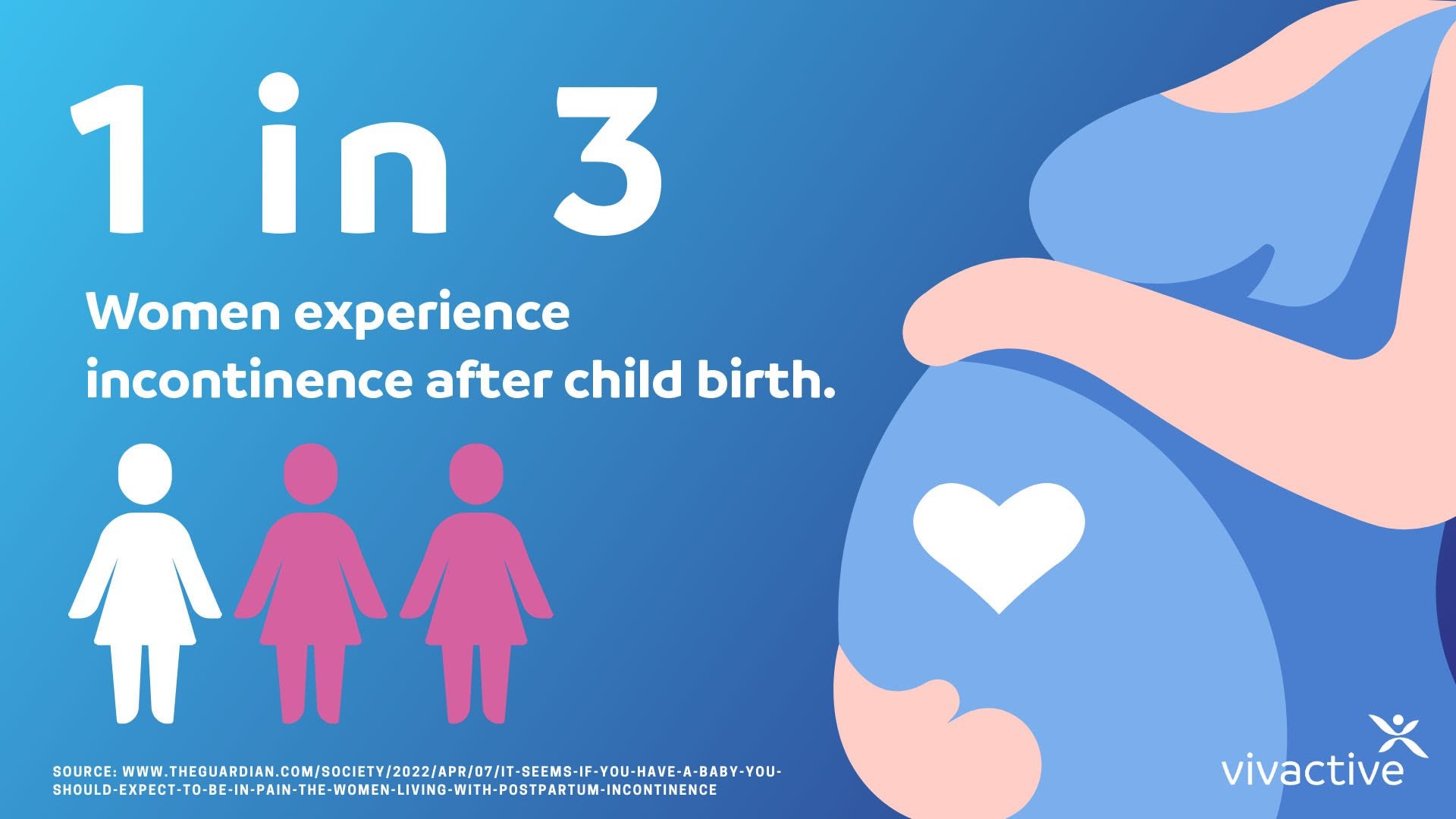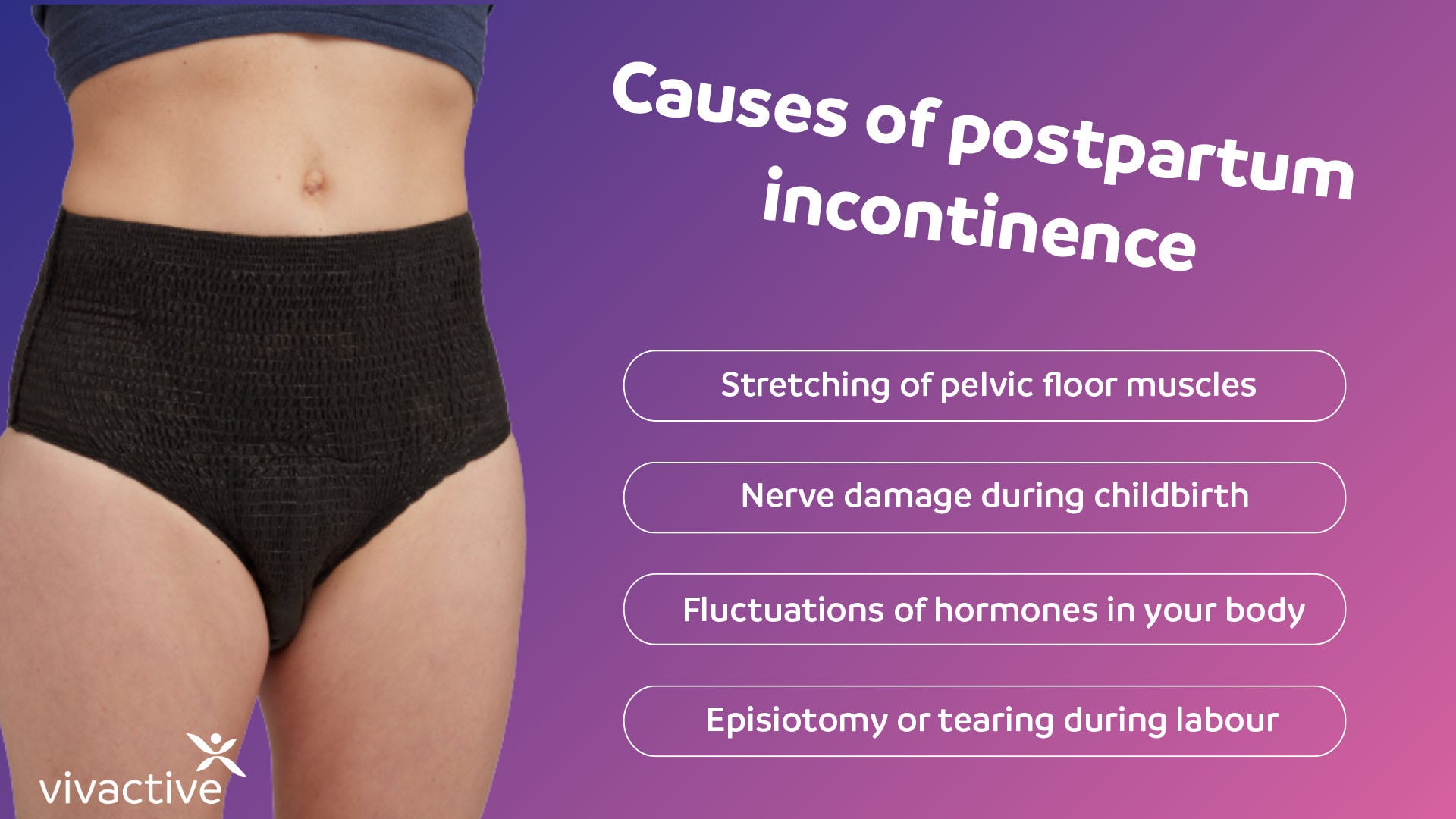
Share this page with friends
Understanding incontinence after childbirth
Is there anything more physically and emotionally overwhelming than welcoming a new addition to the family? For many mothers, urinary leakage after childbirth can be an unexpected and stressful part of the post-partum experience. For a long time, understanding and managing urinary incontinence after childbirth was pushed to the side.
It was one of those topics that was swept under the rug; nobody wanted to talk about it, nobody wanted to address it. Well, we talk about things now. Let’s take a look at incontinence after childbirth and how you can help manage it.
Is urinary incontinence after childbirth common?
Yes, urinary incontinence after childbirth is very common. It's estimated that around 1 in 3 women experience some form of urinary incontinence after giving birth. This can range from occasional leaks when coughing or sneezing to a more frequent and urgent need to urinate. While it's a common experience, it's important to remember that it's not something you simply have to "live with." Many effective treatments and management strategies are available. Often, the incontinence is stress-related, meaning leakage occurs when pressure is put on the bladder, such as during coughing, sneezing, laughing, or exercise. Several factors can increase the likelihood of experiencing incontinence after childbirth, including:
- Vaginal delivery: While incontinence can occur after a cesarean section, it is more common after a vaginal delivery due to the strain placed on the pelvic floor.
- Larger baby: A larger baby can put more pressure on the pelvic floor during pregnancy and delivery.
- Long labour: A prolonged labour can also contribute to pelvic floor muscle fatigue and weakness.
- Multiple births: Women who have had multiple pregnancies are at a higher risk.
- Obesity: Excess weight can put additional strain on the pelvic floor.
- Pre-existing bladder issues: Women who experienced bladder problems before pregnancy may be more susceptible to postpartum incontinence.

Why does incontinence after childbirth occur?
Giving birth can cause incontinence due to the strain and pressure that’s put on the pelvic floor muscles and surrounding structures. The process of giving birth, especially vaginal delivery, can significantly stretch and weaken the muscles that support the bladder, urethra, and bum. Here are some of the key things that contribute to postpartum incontinence:
Stretching of pelvic floor muscles:
The weight of the baby and the force of contractions during labour put immense strain on the pelvic floor muscles. This can result in stretching or even tearing of the muscles and connective tissues that support the pelvic organs, leading to decreased muscle strength and control.
Damage to nerves:
The nerves responsible for controlling bladder function can be impacted during childbirth. This can disrupt the coordination between the bladder muscles and the brain, leading to difficulties in bladder control.
Hormonal changes:
Pregnancy and childbirth cause significant hormonal fluctuations in a woman's body. These hormonal changes can affect the integrity and elasticity of the pelvic floor muscles, making them more susceptible to weakness and reduced control over bladder function.
Episiotomy or tear:
In some cases, an episiotomy (a surgical cut made to widen the vaginal opening) or a tear during childbirth may occur. This can damage muscles and nerves, contributing to incontinence.

Types of urinary leaking
- Stress incontinence: Occurs when pressure is put on the bladder when you do things like cough, sneeze, or exercise.
- Urge incontinence: Involves a sudden and intense urge to pee, followed by an involuntary loss of bladder control.
- Mixed incontinence: A combination of both stress and urge incontinence.
- Overflow incontinence: This happens when the bladder doesn’t empty completely.
- Functional incontinence: When somebody has normal bladder control but cannot reach the toilet in time. This could be due to physical or mental limitations.
For more information on urinary incontinence in general, see our blog ‘What is Urinary Incontinence’.
Effective incontinence management techniques
Managing leaks after childbirth isn’t a one size fits all approach and unfortunately there’s no magic pill to take. However, with some lifestyle changes and a lot of kegel’ing, you can begin to manage the situation a little better and get back on the road to comfort and confidence.
Pelvic floor exercises:
- Kegel exercises: Strengthening the pelvic floor muscles through regular Kegel exercises can improve bladder control and reduce leakage.
- Consult with a pelvic floor physiotherapist: Yep, they exist. Seeking guidance from a specialised therapist can provide personalised exercises and techniques for the very best results.
Strong fluid intake and diet:
Hydration is key. While it might seem counterintuitive, staying well-hydrated can actually help with incontinence. Concentrated urine can irritate the bladder, so drinking enough water helps keep your urine diluted.
It’s also important to consider your diet. Certain foods and drinks can irritate the bladder and worsen incontinence symptoms. Common culprits include caffeine (coffee, tea, chocolate), alcohol, acidic foods (citrus fruits, tomatoes), and spicy foods. Keeping a food diary can help identify any triggers. A balanced diet rich in fiber can also help prevent constipation, which can put extra pressure on the pelvic floor.
Maintain a healthy weight:
Achieving and maintaining a healthy weight can alleviate pressure on the bladder and pelvic floor muscles, reducing leakages. What constitutes a ‘healthy’ weight is of course different for everyone, but if you’re unsure, give the doctor a visit.
Bladder training
Bladder training is a behavioral therapy that can help improve bladder control and reduce urinary incontinence. It's particularly useful after childbirth, as the growing baby puts pressure on your bladder, causing it to feel full more quickly than usual. This can lead to more frequent trips to the toilet and a decreased ability to hold urine for extended periods. Bladder training aims to "retrain" your bladder to hold more urine and reduce the urgency and frequency of going to the toilet. It involves a combination of techniques, including scheduled voiding, double voiding, and urge suppression.
- Scheduled voiding: Involves going to the toilet at set intervals, even if you don't feel the urge to go. Initially, you might start with going every two to three hours. As your bladder control improves, you can gradually increase the time between bathroom visits. This helps your bladder get used to holding larger volumes of urine.
- Double voiding: Another helpful technique. After emptying your bladder, wait a few minutes and then try to empty it again. This can help ensure that your bladder is completely empty, reducing the risk of overflow incontinence.
- Urge suppression: can help you manage the sudden and intense urges to urinate that often accompany incontinence. When you feel an urge, try to distract yourself with something else, such as deep breathing, counting backward, or doing a quick pelvic floor contraction. This can help you resist the urge until you can get to a toilet. Bladder training requires patience and consistency, but it can be a very effective way to regain control over your bladder function and improve your quality of life.
Use incontinence products:
There’s a whole world of incontinence items out there and choosing the right ones for you isn’t always simple. The first place you’ll probably go is the supermarket, but you’ll quickly find that the solutions there are often vastly overpriced. Before chucking your money away on ‘big brand names’ - consider Vivactive. Vivactive offer incontinence pads, pants and everything in between, with the same (sometimes superior quality) that you might expect from the big brands, but the lower price means you won’t feel ripped off.
Buy with confidence today
If you’re experiencing urinary leakage after childbirth, then Incontinence products can support you in continuing with your day-to-day life in confidence. Whether you need disposable incontinence pads or pants, why not take a look at our range? We have a selection of products for both males and females from brands such as Vivactive, TENA, Always, Abena, Attends, and more.





